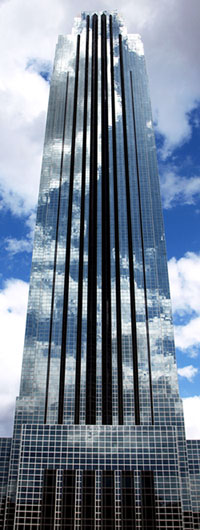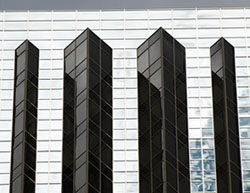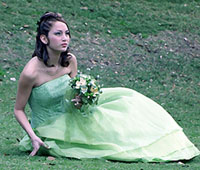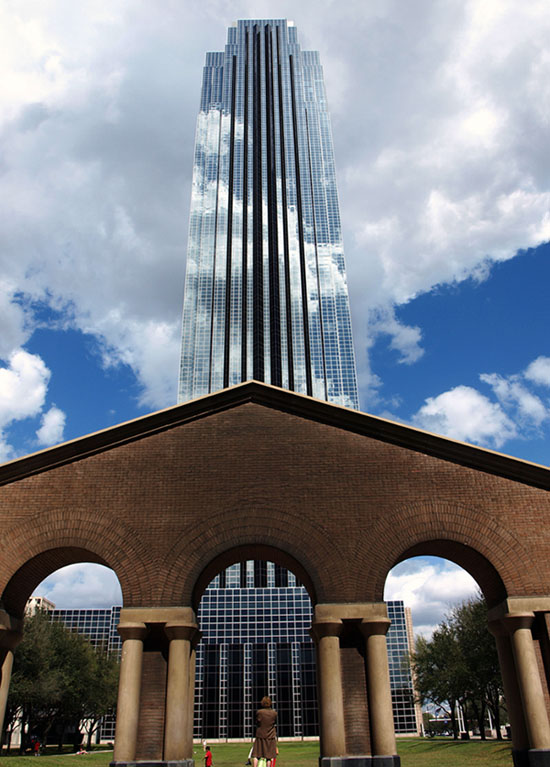Transco/Williams Tower
Today, a lone skyscraper. The University of Houston's College of Engineering presents this series about the machines that make our civilization run, and the people whose ingenuity created them.
 Skyscrapers are notoriously social creatures. They seem to have a herd instinct as strong as cows or sheep. They gather together to form skylines. That's why, when we first came to Houston and saw a building rising to the west of town, we didn't expect much. But this one kept going -- up and up.
Skyscrapers are notoriously social creatures. They seem to have a herd instinct as strong as cows or sheep. They gather together to form skylines. That's why, when we first came to Houston and saw a building rising to the west of town, we didn't expect much. But this one kept going -- up and up.
By 1983, it towered nine hundred feet above us. It left us all gaping each time we looked its direction. Today, it's Texas' fourth tallest building, yet it still sits, alone. No other skyscraper ever joined it. What happened to that herd instinct?
It was first called Transco Tower for its main tenant, and it laid claim to the west Houston horizon. Now a new tenant gives it a new name, Williams Tower, but that cuts little ice. Transco got there first and that name lingers in everyone's mind just as the sight of the building does. It's visible for over twenty miles by day and we all use it as a navigational beacon. At night a huge rotating beacon literally guides us from miles away.
Transco, or Williams, Tower is more than just big; its neo-art-deco lines are really lovely. Small wonder -- the great architect Philip Johnson had a big hand in designing it. If it'd been built fifty years earlier, in New York, it would've been faced with stone. Now the same appearance has cleverly been wrought in glass. The stark vertical lines are actually vertical rows of windows angled outward. The building is one huge optical illusion.
 There's more: The 64-story tower is really two buildings, one on top of the other. The upper floors are served by their own elevator banks from the first floor. The lower ones are served separately from a second floor lobby. We see no divide from outside, nor are we aware of the observation lobby on the fifty-first floor. We see only pure vertical lines. Small wonder that a would-be King Kong -- a man in a gorilla suit and armed with suction cups -- tried to scale the Tower in 1985. He got to the 20th floor before police were able to stop him. So this lonely minaret beckons.
There's more: The 64-story tower is really two buildings, one on top of the other. The upper floors are served by their own elevator banks from the first floor. The lower ones are served separately from a second floor lobby. We see no divide from outside, nor are we aware of the observation lobby on the fifty-first floor. We see only pure vertical lines. Small wonder that a would-be King Kong -- a man in a gorilla suit and armed with suction cups -- tried to scale the Tower in 1985. He got to the 20th floor before police were able to stop him. So this lonely minaret beckons.
 It has another feature that its more social skyscraper cousins lack. The building faces, not a busy street, but a three-acre green field, lined with live oak trees. On a Sunday afternoon students sit and read, a young bridesmaid poses for a photographer, kids play ball. This could be rural England.
It has another feature that its more social skyscraper cousins lack. The building faces, not a busy street, but a three-acre green field, lined with live oak trees. On a Sunday afternoon students sit and read, a young bridesmaid poses for a photographer, kids play ball. This could be rural England.
At the far end of the green, a 60-foot, semi-circular water wall rises behind a triple archway. We stand with the water shushing at our back, and look at the Tower through one arch. It seems to race against the scudding clouds. Reality bends for a while.
If we tell ourselves that we've just seen the world's largest lone-standing skyscraper we blunt the moment -- turn it into a statistic. What really matters is the pure visual impact of standing so close to anything so large and still being able to see it fully.
I'm John Lienhard, at the University of Houston, where we're interested in the way inventive minds work.
For more on Transco/Williams Tower, see this website.
All photos by JHL



Transco/Williams Tower eight miles away, standing above myriad large urban office and apartment buildings in the foreground